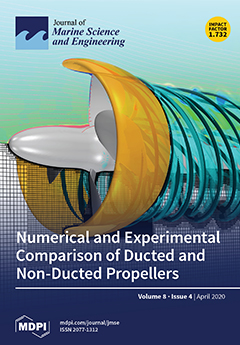Coral sand is an important filler resource that can solve the shortage of terrestrial fillers in coastal areas. Recently, the foundations of many infrastructures in the South China Sea have been built with coral sand as fillers, which have been subjected to wave
[...] Read more.
Coral sand is an important filler resource that can solve the shortage of terrestrial fillers in coastal areas. Recently, the foundations of many infrastructures in the South China Sea have been built with coral sand as fillers, which have been subjected to wave and traffic cyclic loads. Resilient modulus (
Mr) is an important design parameter in marine engineering, but there are few studies on the resilient modulus response of coral sand under cyclic loading. A series of drained cyclic triaxial tests were carried out to investigate the effects of the initial mean effective stress (
p0) and cyclic stress ratio (
ζ) on the resilient modulus response of the coral sand from the South China Sea. The change of fractal dimension (
αc) can reflect the rule of particle breakage evolution. The
αc of coral sand shows a tendency of almost maintaining stable and then increasing rapidly with the increase of mean effective stress
p0 under each cyclic stress ratio
ζ. There is a threshold of
p0, when the
p0 exceeds this threshold,
αc will increase significantly with the increase of
p0. The increase of
p0 has a beneficial effect on the improvement of the
Mr, while the increase of
ζ has both beneficial and detrimental effects on the improvement of the
Mr. A new prediction model of the
Mr considering particle breakage was established, which can better predict the
Mr of coral sand in the whole stress interval. The research results can provide guidance for the design of marine transportation infrastructures, which can promote the development of marine transportation industry and energy utilization.
Full article





